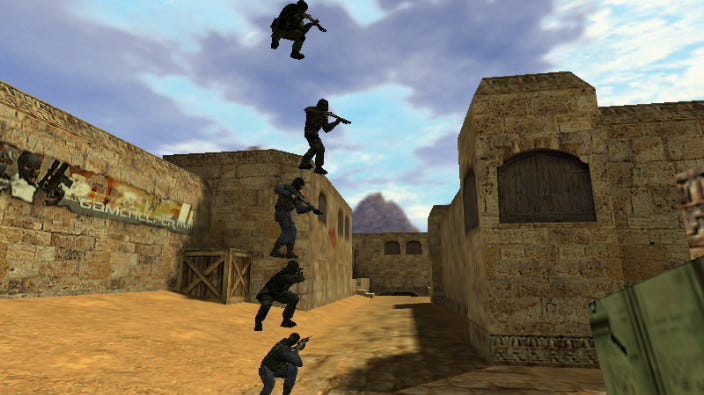President Biden will raise the tariff rate on Chinese semiconductors from 25% to 50% by 2025, among other measures to protect U.S. businesses from China’s trade practices. Also, as part of President Biden’s AI Executive Order, the Administration released steps to protect workers from AI risks, including human oversight of systems and transparency about what systems are being used.
Intel is in advanced talks with Apollo Global Management for the equity firm to provide more than $11 billion to build a fab in Ireland, reported the Wall Street Journal. Also, Intel’s Foundry Services appointed Kevin O’Buckley as the senior vice president and general manager.
Polar is slated to receive up to $120 million in CHIPS Act funding to establish an independent American foundry in Minnesota. The company expects to invest about $525 million in the expansion of the facility over the next two years, with a $75 million investment from the State of Minnesota.
Arm plans to develop AI chips for launch next year, reports Nikkei Asia.
South Korea is planning a support package worth more than 10 trillion won ($7.3 billion) aimed at chip materials, equipment makers, and fabless companies throughout the semiconductor supply chain, according to Reuters.
Quick links to more news:
Global
In-Depth
Markets and Money
Security
Supercomputing
Education and Training
Product News
Research
Events and Further Reading
Global
Edwards opened a new facility in Asan City, South Korea. The 15,000m² factory provides a key production site for abatement systems, and integrated vacuum and abatement systems for semiconductor manufacturing.
France’s courtship with mega-tech is paying off. Microsoft is investing more than US $4 billion to expand its cloud computing and AI infrastructure, including bringing up to 25,000 advanced GPUs to the country by the end of 2025. The “Choose France” campaign also snagged US $1.3 billion from Amazon for cloud infrastructure expansion, genAI and more.
Toyota, Nissan, and Honda are teaming up on AI and chips for next-gen cars with support from Japan’s Ministry of Economy, Trade and Industry, (METI), reports Nikkei Asia.
Meanwhile, IBM and Honda are collaborating on long-term R&D of next-gen technologies for software-defined vehicles (SDV), including chiplets, brain-inspired computing, and hardware-software co-optimization.
Siemens and Foxconn plan to collaborate on global manufacturing processes in electronics, information and communications technology, and electric vehicles (EV).
TSMC confirmed a Q424 construction start date for its first European plant in Dresden, Germany.
Amazon Web Services (AWS) plans to invest €7.8 billion (~$8.4B) in the AWS European Sovereign Cloud in Germany through 2040. The system is designed to serve public sector organizations and customers in highly regulated industries.
In-Depth
Semiconductor Engineering published its Low Power-High Performance newsletter this week, featuring these stories:
And this week’s Test, Measurement & Analytics newsletter featured these stories:
Markets and Money
The U.S. National Institute of Standards and Technology (NIST) awarded more than $1.2 million to 12 businesses in 8 states under the Small Business Innovation Research (SBIR) Program to fund R&D of products relating to cybersecurity, quantum computing, health care, semiconductor manufacturing, and other critical areas.
Engineering services and consulting company Infosys completed the acquisition of InSemi Technology, a provider of semiconductor design and embedded software development services.
The quantum market, which includes quantum networking and sensors alongside computing, is predicted to grow from $838 million in 2024 to $1.8 billion in 2029, reports Yole.
Shipments of OLED monitors reached about 200,000 units in Q1 2024, a year over year growth of 121%, reports TrendForce.
Global EV sales grew 18% in Q1 2024 with plug-in hybrid electric vehicles (PHEV) sales seeing 46% YoY growth and battery electric vehicle (BEV) sales growing just 7%, according to Counterpoint. China leads global EV sales with 28% YoY growth, while the US grew just 2%. Tesla saw a 9% YoY drop, but topped BEV sales with a 19% market share. BYD grew 13% YoY and exported about 100,000 EVs with 152% YoY growth, mainly in Southeast Asia.
DeepX raised $80.5 million in Series C funding for its on-device NPU IP and AI SoCs tailored for applications including physical security, robotics, and mobility.
MetisX raised $44 million in Series A funding for its memory solutions built on Compute Express Link (CXL) for accelerating large-scale data processing applications.
Security
While security experts have been warning of a growing threat in electronics for decades, there have been several recent fundamental changes that elevate the risk.
Synopsys and the Ponemon Institute released a report showing 54% of surveyed organizations suffered a software supply chain attack in the past year and 20% were not effective in their response. And 52% said their development teams use AI tools to generate code, but only 32% have processes to evaluate it for license, security, and quality risks.
Researchers at Ruhr University Bochum and TU Darmstadt presented a solution for the automated generation of fault-resistant circuits (AGEFA) and assessed the security of examples generated by AGEFA against side-channel analysis and fault injection.
TXOne reported on operational technology security and the most effective method for preventing production interruptions caused by cyber-attacks.
CrowdStrike and NVIDIA are collaborating to accelerate the use of analytics and AI in cybersecurity to help security teams combat modern cyberattacks, including AI-powered threats.
The National Institute of Standards and Technology (NIST) finalized its guidelines for protecting sensitive data, known as controlled unclassified information, aimed at organizations that do business with the federal government.
The Defense Advanced Research Projects Agency (DARPA) awarded BAE Systems a $12 million contract to solve thermal challenges limiting electronic warfare systems, particularly in GaN transistors.
Sigma Defense won a $4.7 million contract from the U.S. Army for an AI-powered virtual training environment, partnering with Brightline Interactive on a system that uses spatial computing and augmented intelligence workflows.
SkyWater’s advanced packaging operation in Florida has been accredited as a Category 1A Trusted Supplier by the Defense Microelectronics Activity (DMEA) of the U.S. Department of Defense (DoD).
Videos of two CWE-focused sessions from CVE/FIRST VulnCon 2024 were made available on the CWE YouTube Channel.
The Cybersecurity and Infrastructure Security Agency (CISA) issued a number of alerts/advisories.
Supercomputing
Supercomputers are battling for top dog.
The Frontier supercomputer at Oak Ridge National Laboratory (ORNL) retained the top spot on the Top500 list of the world’s fastest systems with an HPL score of 1.206 EFlop/s. The as-yet incomplete Aurora system at Argonne took second place, becoming the world’s second exascale system at 1.012 EFlop/s. The Green500 list, which tracks energy efficiency of compute, saw three new entrants take the top places.
Cerebras Systems, Sandia National Laboratory, Lawrence Livermore National Laboratory, and Los Alamos National Laboratory used Cerebras’ second generation Wafer Scale Engine to perform atomic scale molecular dynamics simulations at the millisecond scale, which they claim is 179X faster than the Frontier supercomputer.
UT Austin‘s Stampede3 Supercomputer is now in full production, serving the open science community through 2029.
Education and Training
SEMI announced the SEMI University Semiconductor Certification Programs to help alleviate the workforce skills gap. Its first two online courses are designed for new talent seeking careers in the industry, and experienced workers looking to keep their skills current. Also, SEMI and other partners launched a European Chip Skills Academy Summer School in Italy.
Siemens created an industry credential program for engineering students that supplements a formal degree by validating industry knowledge and skills. Nonprofit agency ABET will provide accreditation. The first two courses are live at the University of Colorado Boulder (CU Boulder) and a series is planned with Pennsylvania State University (Penn State).
Syracuse University launched a $20 million Center for Advanced Semiconductor Manufacturing, with co-funding from Onondaga County.
Starting young is a good thing. An Arizona school district, along with the University Of Arizona, is creating a semiconductor program for high schoolers.
Product News
Siemens and Sony partnered to enable immersive engineering via a spatial content creation system, NX Immersive Designer, which includes Sony’s XR head-mounted display. The integration of hardware and software gives designers and engineers natural ways to interact with a digital twin. Siemens also extended its Xcelerator as a Service portfolio with solutions for product engineering and lifecycle management, cloud-based high-performance simulation, and manufacturing operations management. It will be available on Microsoft Azure, as well.
Advantest announced the newest addition to its portfolio of power supplies for the V93000 EXA Scale SoC test platform. The DC Scale XHC32 power supply offers 32 channels with single-instrument total current of up to 640A.

Fig. 1: Advantest’s DC Scale XHC32. Source: Advantest
Infineon released its XENSIV TLE49SR angle sensors, which can withstand stray magnetic fields of up to 8 mT, ideal for applications of safety-critical automotive chassis systems.
Google debuted its sixth generation Cloud TPU, 4.7X faster and 67% more energy-efficient than the previous generation, with double the high-bandwidth memory.
X-Silicon uncorked a RISC-V vector CPU, coupled with a Vulkan-enabled GPU ISA and AI/ML acceleration in a single processor core, aimed at embedded and IoT applications.
IBM expanded its Qiskit quantum software stack, including the stable release of its SDK for building, optimizing, and visualizing quantum circuits.
Northeastern University announced the general availability of testing and integration solutions for Open RAN through the Open6G Open Testing and Integration Center (Open 6G OTIC).
Research
The University of Glasgow received £3 million (~$3.8M) from the Engineering and Physical Sciences Research Council (EPSRC)’s Strategic Equipment Grant scheme to help establish “Analogue,” an Automated Nano Analysing, Characterisation and Additive Packaging Suite to research silicon chip integration and packaging.
EPFL researchers developed scalable photonic ICs, based on lithium tantalate.
DISCO developed a way to increase the diameter of diamond wafers that uses the KABRA process, a laser ingot slicing method.
CEA-Leti developed two complementary approaches for high performance photon detectors — a mercury cadmium telluride-based avalanche photodetector and a superconducting single photon detector.
Toshiba demonstrated storage capacities of over 30TB with two next-gen large capacity recording technologies for hard disk drives (HDDs): Heat Assisted Magnetic Recording (HAMR) and Microwave Assisted Magnetic Recording (MAMR).
Caltech neuroscientists reported that their brain-machine interface (BMI) worked successfully in a second human patient, following 2022’s first instance, proving the device is not dependent on one particular brain or one location in a brain.
Linköping University researchers developed a cheap, sustainable battery made from zinc and lignin, while ORNL researchers developed carbon-capture batteries.
Events and Further Reading
Find upcoming chip industry events here, including:
| Event |
Date |
Location |
| European Test Symposium |
May 20 – 24 |
The Hague, Netherlands |
| NI Connect Austin 2024 |
May 20 – 22 |
Austin, Texas |
| ITF World 2024 (imec) |
May 21 – 22 |
Antwerp, Belgium |
| Embedded Vision Summit |
May 21 – 23 |
Santa Clara, CA |
| ASIP Virtual Seminar 2024 |
May 22 |
Online |
| Electronic Components and Technology Conference (ECTC) 2024 |
May 28 – 31 |
Denver, Colorado |
| Hardwear.io Security Trainings and Conference USA 2024 |
May 28 – Jun 1 |
Santa Clara, CA |
| SW Test |
Jun 3 – 5 |
Carlsbad, CA |
| IITC2024: Interconnect Technology Conference |
Jun 3 – 6 |
San Jose, CA |
| VOICE Developer Conference |
Jun 3 – 5 |
La Jolla, CA |
| CHIPS R&D Standardization Readiness Level Workshop |
Jun 4 – 5 |
Online and Boulder, CO |
|
|
|
| Find All Upcoming Events Here |
|
|
|
|
|
Upcoming webinars are here.
Semiconductor Engineering’s latest newsletters:
Automotive, Security and Pervasive Computing
Systems and Design
Low Power-High Performance
Test, Measurement and Analytics
Manufacturing, Packaging and Materials
The post Chip Industry Week In Review appeared first on Semiconductor Engineering.














